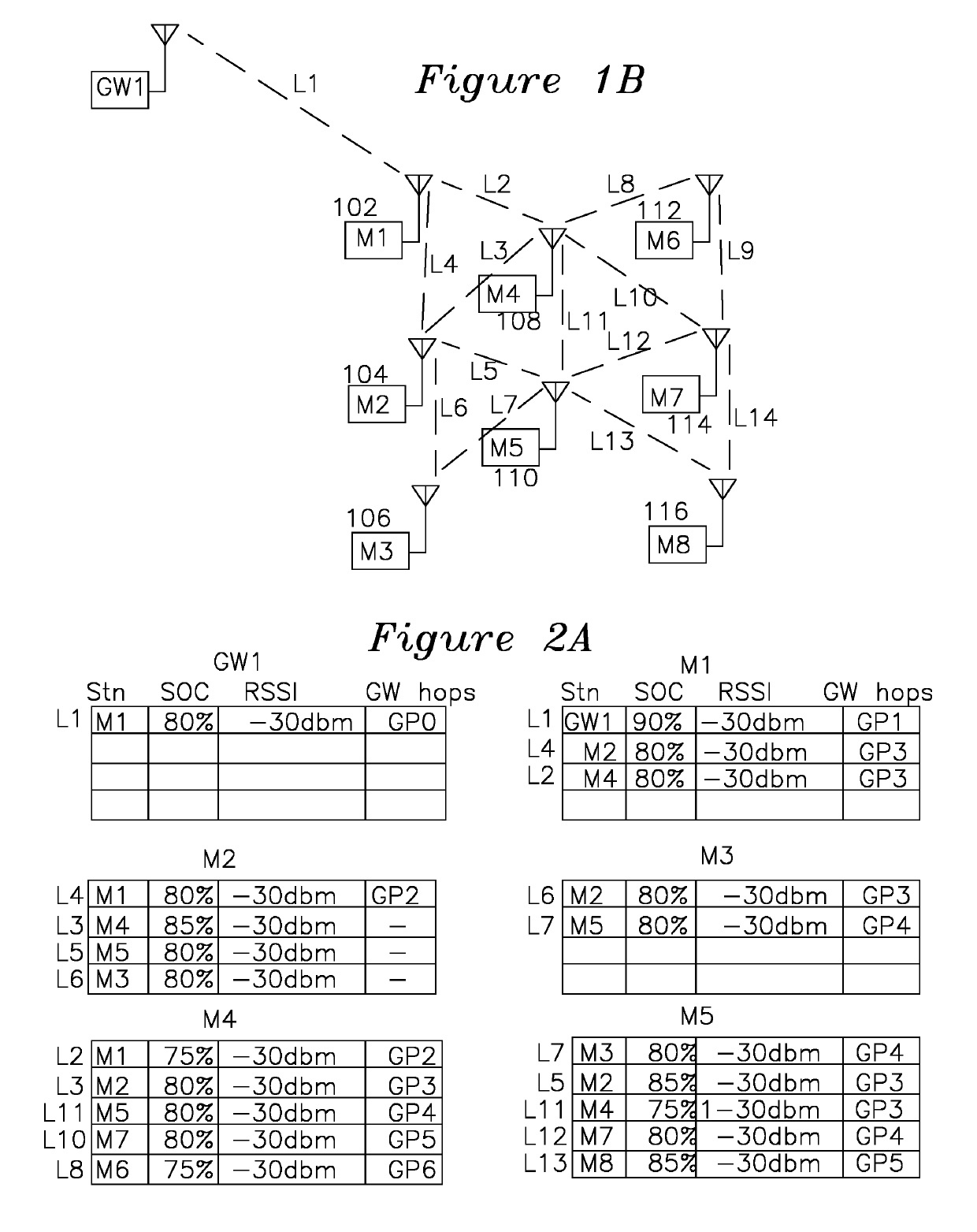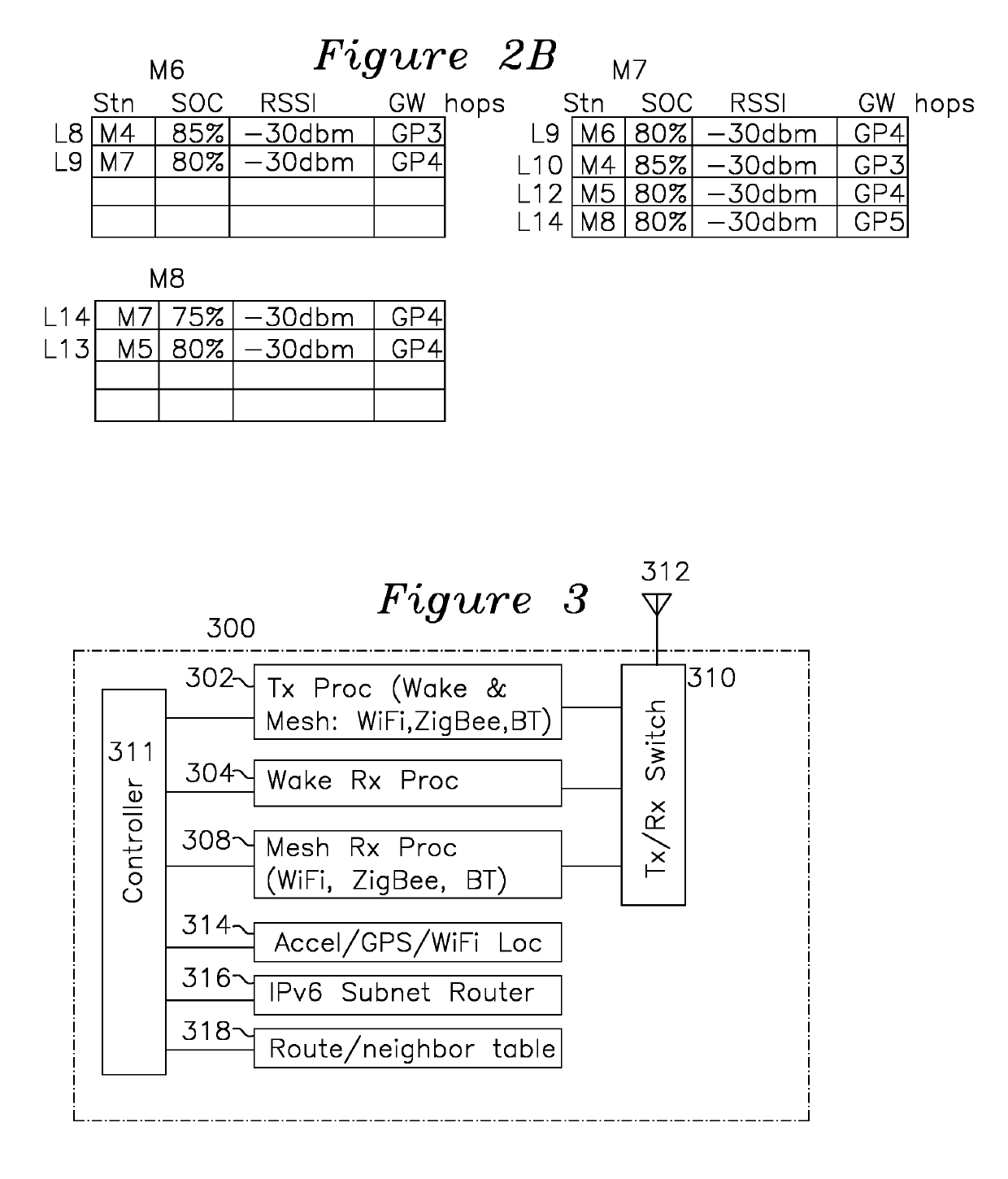Ultra Low Power Mesh Network
a low power, mesh network technology, applied in the direction of substation remote connection/disconnection, high-level techniques, climate sustainability, etc., can solve the problems of 4 minutes of wifi, no centralized timing or transmission, and inacceptable for most purposes, and achieve the effect of faster data ra
- Summary
- Abstract
- Description
- Claims
- Application Information
AI Technical Summary
Benefits of technology
Problems solved by technology
Method used
Image
Examples
Embodiment Construction
[0044]FIG. 1B shows an example mesh network formed from mesh devices of the present invention. Each of the mesh stations M1102, M2104, M3106, M4108, M5110, M6112, M7114, M8116 is shown as 300 of FIG. 3, which includes wakeup receive processor 304 for waking up the mesh receive processor 308 from an RF sequence, and transmit processor 302, which is operative in a wakeup transmit mode for sending a wakeup sequence formed from keyed RF patterns (or alternatively from entire WLAN packets) as a sequence of “1” values for an entire packet or RF duration or “0” when not transmitting for an equal interval of time, sending this sequence to surrounding mesh stations as RF. In a mesh transmit mode, the transmit processor 302 may transmit ACK and data packets as IEEE 802.11ac, IEEE 802.11n, IEEE 802.11g, or any IEEE 802.11 frame format, or it may transmit ACK and data packets as Zigbee, or it may transmit ack and data packets as Bluetooth packets, either as BLE or BLR packets.
[0045]Each station...
PUM
 Login to View More
Login to View More Abstract
Description
Claims
Application Information
 Login to View More
Login to View More - R&D
- Intellectual Property
- Life Sciences
- Materials
- Tech Scout
- Unparalleled Data Quality
- Higher Quality Content
- 60% Fewer Hallucinations
Browse by: Latest US Patents, China's latest patents, Technical Efficacy Thesaurus, Application Domain, Technology Topic, Popular Technical Reports.
© 2025 PatSnap. All rights reserved.Legal|Privacy policy|Modern Slavery Act Transparency Statement|Sitemap|About US| Contact US: help@patsnap.com



